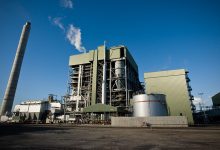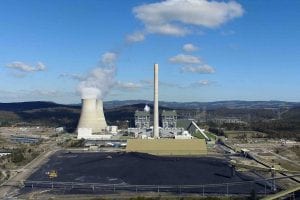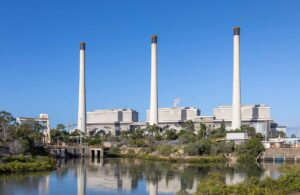Two of Australia’s last remaining brown-coal power stations accounted or almost a third of all outages in the National Electricity Market over the last two years, but a damming new report finds that the least reliable generator in Australia’s main grid is one of the youngest and most “modern” units.
The reliability issues at the ageing brown coal generators in Victoria, the Liddell coal generator in NSW, and others in NSW and Queensland, is well established. What is shocking is the poor performance of the biggest single unit in the country, the 750MW Kogan Creek plant in Queensland.
It was built in 2007, but according to new analysis published by think tank The Australia Institute, recorded the most number of breakdowns over a two year period of any coal unit in the main grid.
AGL Energy’s Loy Yang A and EnergyAustralia’s Yallourn W were the worst performing power stations in the National Electricity Market between 2017 and 2019 in total numbers, with a combined 67 breakdowns over the period.
Victorian power stations were the cause of 79 outages over the last two years, representing more than a third of the 227 outages experienced across the National Electricity Market, with two of the State’s largest power stations suffering outages of some units of more than six months.
Queensland coal generators also ranked highly amongst the list of least reliable power stations, with the Gladstone, Stanwell and Kogan Creek power stations all ranking within the top six.
Kogan Creek is one of Australia’s youngest coal-fired power station, having been commissioned in 2007, and is touted as featuring ‘advanced’ technologies that help the plant run more efficiently than most of Australia’s coal power fleet, but the power station’s single 750MW generator is also Australia’s least reliable unit.
The outages likely relate to planned maintenance at the power station, following a $90 million commitment from the power station’s owner CS Energy announced last year, to overhaul the power station after 13 years of operation and just three years after the last overhaul of the power station 2016.
A spokesperson for Stanwell Corporation told RenewEconomy that the recorded outages at the Stanwell power station largely reflected scheduled shutdowns for power station maintenance, rather than unexpected failures.
“In its report, the Australia Institute counted every instance of a power station going offline as a “breakdown”. In reality, nine of the events characterised by the Australia Institute as “breakdowns” at Stanwell Power Station were actually controlled test activities for the commissioning of a new control system. We use these test activities to ensure our reliability and to prevent any future issues,” the spokesperson said.
“A further two of the “breakdown” events reported were controlled tests, performed in conjunction with the Australian Energy Market Operator to demonstrate our capability to quickly and safely respond in the event of the system “going black”. These tests aim to demonstrate the grid’s capability and ensure we can continue to deliver the energy needs of the market.”
The ageing Liddell power station was the worst performing power station in New South Wales in terms of reliability, suffering a total of 16 failures over the last two years.
Leaked findings of a task force established to examine the possible future of the Liddell power station found that it would cost as much as $300 million to extend the life of the power station, which was first commissioned in 1971, by just three years without improvements to its reliability. Owner AGL Energy intends to close the power station in 2023 but has faced intense pressure from the Morrison government to find a way to keep the power station operating.
The draft report from the task force also concluded that the funds needed to extend the life of the Liddell power station would need to be provided by the taxpayer, as no major energy company or bank would be willing to investing in the ageing power station.
The rate of reliability issues raises significant challenges for Victoria to maintain reliable electricity supplies, with the Australian Energy Market Operator (AEMO) warning in its annual Electricity Statement of Opportunities that Victoria was at risk of failing to meet its reliability standard over the 2019/20 summer.
Citing the findings of its analysis, the Australia Institute warned that the likelihood of blackouts or load-shedding in Victoria was being driven higher as a result of the deteriorating reliability of the State’s coal fired generators.
“If Victoria experiences blackouts in the coming months, part of the cause is likely to be breakdowns and extended outages of fossil fuel power plants,” Merzian said.
“The best ways to manage the grid and ensure reliability is to reduce peak demand and improve efficiency, both of which conserve energy when we need it most.”
Loy Yang A (2,210 W) is Victoria’s largest power station and is Australia’s largest source of greenhouse gas emissions. The Yallorn power station (1,450MW) ranks as Victoria’s second largest power station and Australia’s fourth worst emitter. They remain some of Australia’s last brown-coal power stations that have substantially larger emissions intensities compared to the rest of the energy market.
One of the 530MW units of the Loy Yang A power station, located in Victoria’s Latrobe Valley, was out of action for a total of seven months in 2019 after the unit failed. The unit returned to operation in December, but not before the outage made a $100 million dent to AGL’s earnings.
Victoria’s Mortlake gas-fired power station, located in the State’s west, was also offline for almost half of 2019 after the power station experienced an electrical fault that necessitated that the power station close for repairs. The 566MW power station, operated by Origin Energy, only returned to action last month.
“Victoria’s unreliable brown coal clunkers are compromising Australia’s energy security and the bad news is that they’re not getting any younger,” The Australia Institute’s climate and energy director Richie Merzian said.
“During the harsh conditions of summer, energy demand increases but these old power plants cannot be counted on to maintain the reliability of supply and keep prices down.”
Citing the analysis, The Australia Institute said that it remained crucial for federal and state governments to implement meaningful policies to address climate change and energy investment.
“Australia needs a credible climate and energy plan that transitions the electricity sector from ageing unreliable gas and coal power stations to a modern grid built around renewable energy, storage and demand side management.”









